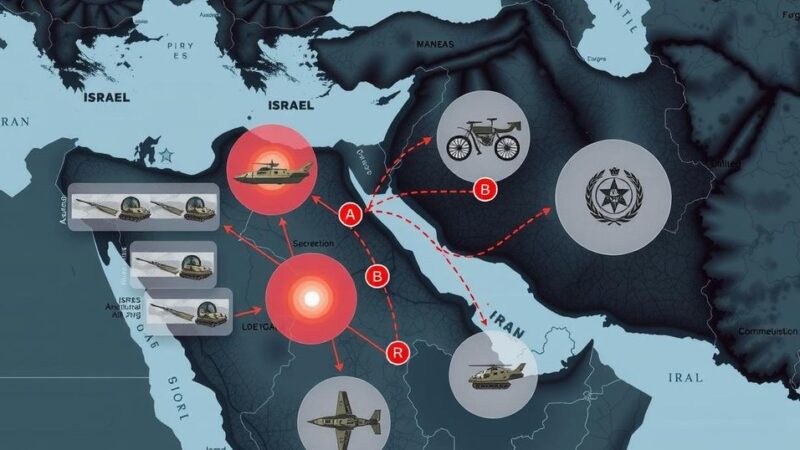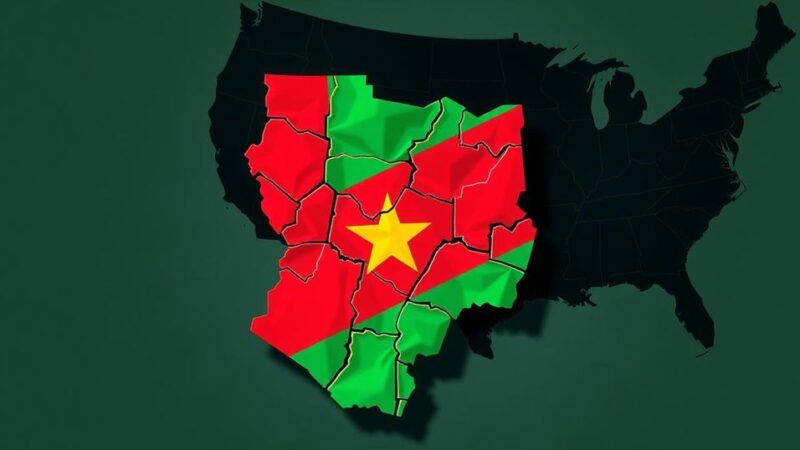Islamic State West Africa Province (ISWAP) has escalated its insurgency tactics by employing weaponised drones, marking a first for the Lake Chad Basin. The use of drones poses a grave challenge to counter-terrorism strategies, necessitating immediate attention and adaptation from regional security forces. The group’s advancements in weaponry and recruitment further complicate the situation, emphasizing the need for comprehensive strategies to counter this evolving threat.
The Lake Chad Basin is witness to a significant escalation in insurgent activity as Islamic State West Africa Province (ISWAP) increasingly employs weaponised drones in direct combat. The December 24, 2024 attack on Nigeria’s Forward Operating Base in Wajiroko epitomizes this shift, being the first recorded instance of a terrorist organization in the region utilizing aerial drones equipped with locally manufactured grenades, resulting in injuries to five soldiers.
This transformative use of armed drones poses a critical challenge to existing counter-terrorism strategies. While drones have been used by African state armed forces, their adaptation by non-state actors like ISWAP raises serious concerns regarding regional security. A warning from the Institute for Security Studies (ISS) indicated that ISWAP was approaching the capability of deploying such technology, marking a notable turning point in the fight against violent extremism in the area.
ISWAP’s initial use of drones was primarily for propaganda and surveillance, following precedents set by other extremist groups in the region. The recent weaponisation of drones allows non-state actors to significantly enhance their operational capabilities, raising complicated questions about how regional security forces can evolve to address this rising threat posed by modern warfare tactics.
Moreover, alarming indicators suggest that ISWAP is also upgrading its weaponry. Compelling video evidence from their post-Wajiroko attack propaganda displays young recruits training with advanced firearms such as the ArmaLite AR-10 Super SASS and the Russian Orsis T-5000 sniper rifles, suggesting foreign training and support. This development highlights ISWAP’s strategic planning and commitment to grooming a new generation of fighters, thereby sustaining their insurgency efforts.
Despite ongoing efforts by national armed forces and the Multinational Joint Task Force (MNJTF), ISWAP’s advancing strategies necessitate more dedicated resources and immediate attention. Major General Godwin Mutkut, the MNJTF commander, underscored the absence of counter-drone technology, which exacerbates vulnerabilities for both citizens and military personnel.
Three pressing inquiries arise from the current situation: the means through which ISWAP acquired drone capabilities; the potential transnational support networks aiding them; and the necessity for regional forces to adapt promptly to contemporary warfare strategies. Insights from ISS interviews reveal that ISWAP’s capabilities are bolstered by smuggling routes, arms trafficking, and modifications of commercially available drones.
If ISWAP is not swiftly curtailed, their drone-enhanced operations could lead to high-impact assaults with reduced casualties, transforming relatively secure locations into vulnerable targets. This escalation threatens to deepen psychological warfare tactics, potentially undermining civilian confidence in state protection, which may inadvertently drive support towards insurgents.
ISWAP’s adeptness in leveraging external networks for drone development and the continuation of radicalising youth signal the necessity for a robust, coordinated multi-pronged strategy by regional governments. Prominent actions include the deployment of counter-drone technologies to disrupt ISWAP operations and enhancing intelligence sharing among security agencies across Nigeria, Chad, Niger, and Cameroon to dismantle supply chains and external support networks.
Conducting preventive strikes on ISWAP’s drone assembly and launch facilities is indispensable to mitigate further advancements in drone warfare capabilities. Even as immediate threats are addressed, long-term interventions to remedy socio-economic vulnerabilities that ISWAP exploits must be pursued, focusing on better governance, security, and counter-radicalisation measures in rural and remote areas. International collaboration may further bolster these efforts by providing essential technical and intelligence support.
The emerging use of weaponised drones by ISWAP marks a perilous evolution in the insurgency landscape of the Lake Chad Basin. This alarming trend necessitates an urgent response from regional security forces, highlighting the vital importance of deploying counter-drone technologies, enhancing intelligence cooperation, and implementing long-term socio-economic strategies to address the grassroots conditions fostering insurgent recruitment. Without a coordinated and multi-faceted approach, the capabilities of ISWAP may continue to expand, exacerbating instability in the region.
Original Source: allafrica.com






